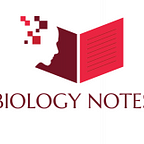Phylum Cnidaria/Coelenterata
Kingdom: Animalia
Habitat: aquatic, mostly marine.
Habit: solitary or colonial. Each individual is known as zooid.
Symmetry: radially symmetrical
Grade of organization: tissue grade of organization.
Germ layer: diploblastic, outer ectoderm and inner endoderm. Mesogloea separates these two layers.
The body has a single opening called hypostome surrounded by sensory tentacles.
Coelom: gastrovascular cavity or coelenteron.
Nematocyst: organ for capturing and paralyzing pray, present in tentacles
Nutrition: holozoic
Digestion is both intracellular and extracellular.
Respiration and excretion are accomplished by simple diffusion.
Circulatory system: absent
Nervous system: poorly develop, Many forms exhibit polymorphism ie. Polyp and medusa. Polyps are sessile, asexual stage. Medusa are free swimming, sexual stage
Metagenesis: asexual polypoid generation alternate with sexual medusoid generation
Reproduction:
Asexual: by budding
Sexual: by gamatic fusion
Fertilization: internal or external
Development: indirect with larval stage
(Koilos: hollow, enteron: cavity)
Classification of Phylum Cnidaria/Coelenterata
The phylum coelenterate is divided into three classes on the basis of development of zooids:
Class1: Hydrozoa
(Hydra; water; zoon: animal)
Habitat: mostly marine, few are fresh water
Habit: some are solitary and some are colonial
Asexual Polyps is dominant form
Medusa possess true velum
Mesogloea is simple and acellular
Examples: Hydra, Obelia, Physalia physalis (Portuguese man of war), Tubularia
Hydra
Physalia physalis
Tubularia
obelia
Class 2: Scyphozoa or Scyphomedusae
Habitat: exclusively marineHabit: solitary, freely swimming
Medusa is dominant and it is Large bell or umbrella shaped
Polyps is short lived or absent
Mesogloea is usually cellular
Examples: Aurelia aurita (Jelly fish), Rhizostoma
Aurelia aurita
Rhizostoma_pulmo (Barrel_jellyfish)
Class 3: Anthozoa or Actinozoa
(Anthos: flower; zoios: animal “flower like animals”)
Habitat: exclusively marine
Habit: Solitary or colonial
Medusa stage is absent
Mesogloea contains fibrous connective tissue and amoeboid cells.
Examples: Metridium (sea anemone), Telesto, Tubipora, Xenia
Metridium_dianthus
telesto
Tubipora
Xenia
